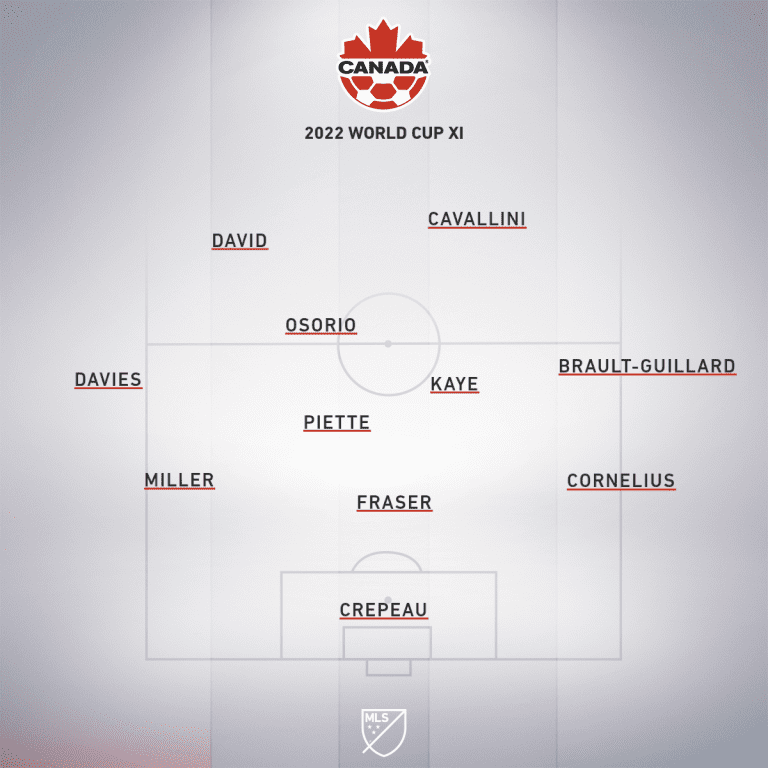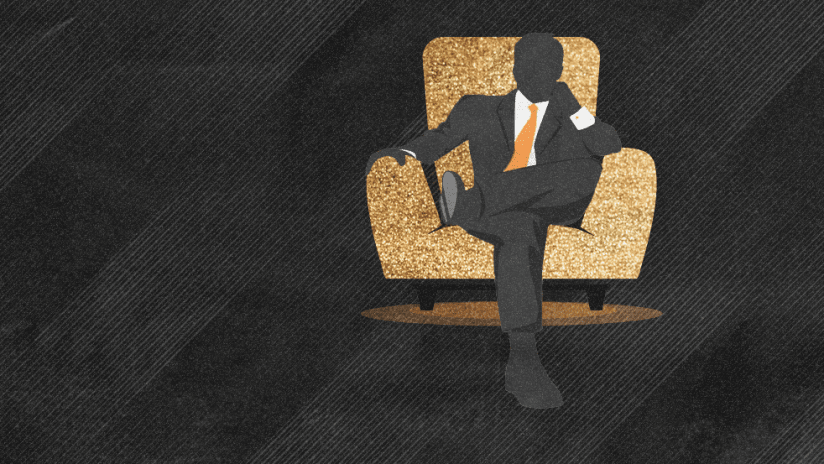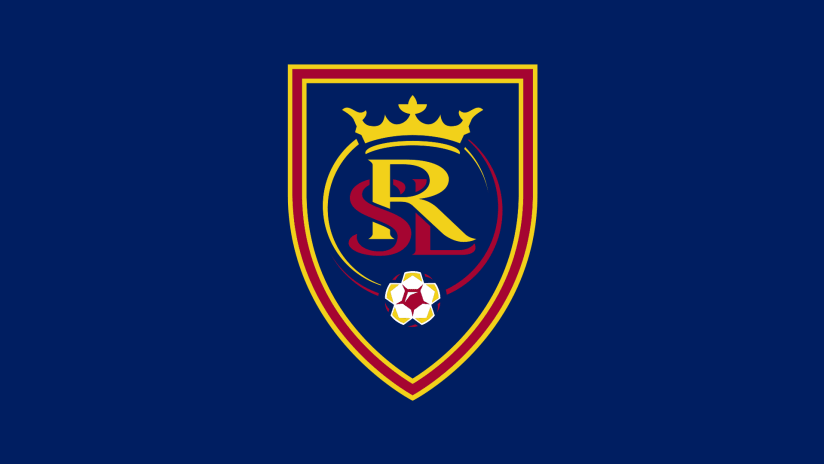It seems written somewhere, by someone with cosmic power, that it must always be done the hard way for the Canadian men's national team. Whether it's been Concacaf Gold Cups or World Cup qualifying or just getting some damn friendlies scheduled, nothing's ever been easy.
And so it goes in this year, 2020, a year in which nothing's ever going to be easy for anybody. Canada, in 2019, looked good and promising. They got a breakout performance from Jonathan David at the Gold Cup, a breakout performance from Alphonso Davies at Bayern Munich, and a breakout performance from Richie Laryea for Toronto FC in the playoffs. They have more striker depth than the US men's national team, more than adequate central midfield depth and a rising goalkeeping star in Maxime Crepeau.
They also had a massive win over the Yanks in September of last year at BMO Field, destroying their southern neighbors 2-0 – a scoreline that flattered the visitors. That win put Canada on the verge of qualifying for the Hexagonal.
But, alas, this is Canada, and things aren't easy. The US returned the favor in the second leg of that Nations League home-and-home, crushing the Canucks by a 4-1 scoreline in Orlando. Just like that, the Hexagonal was just out of reach.
Except maybe not for long! There were three friendlies scheduled in January, and Canada won two of them. And then there were two more friendlies scheduled in late March, both against Trinidad & Tobago. If Canada could win those with some help elsewhere, then by the time World Cup qualifying started, they really could be in the top six. They really could make the Hexagonal!
We all know, of course, what happened to games scheduled in late March: Canada's friendlies were cancelled along with just about everything else around the world. It seems as though they won't be going to the Hex, but will instead embark upon a long voyage (heh) through multiple layers of qualifiers for a possible home-and-home with the fourth-place Hexagonal finisher. And then the winner of that series will be drawn into the inter-confederation playoffs.
With Canada's luck, even if they make it that far, they'll probably be drawn against the fifth-place Conmebol team. In 2018 that would've been Peru, just ahead of two-time defending Copa America champions Chile. In 2014 that would've been Uruguay. In 2010 that would've been... Uruguay again.
What I'm saying is that absolutely nothing is going to be easy for Canada. Nothing has been easy for Canada. But in this version of the future that I'm writing, Canada's surmounted every obstacle and have made it to the 2022 World Cup. For the first time in 36 years, and for just the second time ever, the Canadian men's soccer team will find themselves on the biggest stage.
Along the way – and I know this is going to tick some folks off, but here goes – they'll have decided to play in a 3-5-2. It's simply the best way to get Davies into open space and use his endline-to-endline dynamism without suffering because of his periodic lack of defensive awareness.
As with my US version of this column, I'm predicting some new clubs for some folks. Here's what their roster's going to look like:
Goalkeeper
Maxime Crepeau, Vancouver Whitecaps; Milan Borjan, Red Star Belgrade; Dayne St. Clair, Montreal Impact
There's a very clear No. 1 at the moment in Borjan, but "very clear" is still less clean than it was a year ago, because the 25-year-old Crepeau was outstanding (and outstandingly busy) for the Whitecaps. With Borjan entering his mid-30s and Crepeau entering his prime, I don't think it's far-fetched to imagine that the current No. 2 becomes the full-time No. 1 within the next 24 months. I actually think it's more likely than not.
St. Clair, when picked by Minnesota in the 2019 SuperDraft, was seen as a future No. 1 for that club, but it's much more difficult to see a path to that spot now that Tyler Miller's on the roster. St. Clair now feels like trade bait, and the Impact are in an obvious bit of flux at the goalkeeper spot. So there he lands.
Other considerations: None, really. Crepeau and Borjan are the only first-division starters in the pool, and St. Clair's the youngster with the highest, most obvious upside.
Center Back
Liam Fraser, Toronto FC; Derek Cornelius, Vancouver Whitecaps; Kamal Miller, Orlando City SC; Doneil Henry, Suwon Bluewings; Callum Montgomery, FC Dallas
Usually when I'm drawing out tournament rosters, I try to keep it to four center backs and one other guy who can play center back. But because John Herdman's gone to a back three in this alt-reality (which is sometimes going to operate as a low-block back five, because we want the opponents to push numbers forward and leave space in behind for the counter), we're carrying an extra center back.
Yes, one of those center backs is Fraser, who to this point in his young career has primarily been Michael Bradley's back-up at defensive midfield in Toronto. And for Canada, he actually outplayed Bradley during that massive 2-0 win last September.
But, man, when he's played as a CB for the Reds...
Fraser's in the middle of that backline in 2022. He's the distributing hub.
Like Fraser, Cornelius and Miller are each just 22 years old. Both had up-and-down debut MLS seasons last year, but both are integrated into the full picture for Canada and have obvious spots on the depth chart.
The same can be said of Henry, the veteran of this bunch at age 27. If healthy, he's a natural for the first defensive name on the team sheet, but he's had a brutal run of injuries over the past five years. For the sake of this column, he's healthy.
Since it's my column, it's my call on the roster. And my call is that Montgomery earns the final spot after locking down the job for FC Dallas midway through the 2021 season.
Other considerations:Julian Dunn (TFC), Manjrekar James (FC Midtjylland), Frank Sturing (NEC), Adam Straith (Hansa Rostock), Joel Waterman (Montreal Impact), Amer Didic (FC Edmonton)
Left Wingback
Alphonso Davies, Bayern Munich; Raheem Edwards, Toronto FC
For Bayern Munich, Davies has been one of the best left backs in the entire world. Bayern hold a ton of the ball – they're up around 65 percent possession on the year – and tend to hold it high upfield, overloading in the attacking third against overwhelmed opposition. In that situation, Davies is free to push as high as he wants, and has been a devastating weapon when they've switched play and found him in isolation with space to exploit. No defender in the world wants to face Davies there.
For Canada, when he's played as a left back, he's been a liability. This was Canada's biggest game in years:
On the first US goal he just ball-watches, leaving Jordan Morris open. On the second US goal he's playing catch-up because Paul Arriola's gotten behind him. On the fourth US goal he doesn't lay out to catch DeAndre Yedlin or make any attempt to block Yedlin's cross.
All of this is to say that there are a lot of Canada fans who never again want to see Davies play at left back. Given how good he was the previous game against the Americans, in which he was a hybrid forward/winger, I can't blame them.
Wingback will be our happy medium. You get all the good stuff from Davies on the break, both with and without the ball, but you get that extra layer of defensive solidity behind him in the form of a left center back.
Edwards is another Canadian who's toggled between left back, left winger and left wingback. Like Davies, I think he's at his best as a left wingback. And so here he is, having made a triumphant homecoming to Toronto.
Other considerations: Sam Adekugbe (Valerenga), Zorhan Bassong (Cercle Brugge), Ashtone Morgan (RSL)
Right Wingback
Zachary Brault-Guillard, Montreal Impact; Richie Laryea, Toronto FC
Brault-Guillard was a terror to foes both foreign and domestic in the early part of 2020:
I'm not quite ready to list him as a "revelation," but he came damn close. Brault-Guillard's going to be very high on this year's 22 Under 22, and is a natural as a two-way wingback in Thierry Henry's low-block 5-4-1. It easy to see that translating to the international level.
The same goes for Laryea, who's a few years older and already has a major international feather in his cap after outplaying Christian Pulisic head-to-head last September. Laryea was also a match-winner for Toronto down the stretch last year when playing as a right back, a winger and sometimes as a wingback.
This was a position of major weakness for Canada as recently as last summer. It's now a position of strength.
Other considerations:Clement Bayiha (Montreal), Marcus Godinho (FSV Zwickau)
Defensive Midfield
Samuel Piette, Montreal Impact; Stephen Eustaquio, Cruz Azul
With the way I've got Canada set up, the No. 6 has one job: clean up. This isn't going to be a wide-ranging, multi-faceted position for a modern player. This is going to be old-fashioned grunt work, and there's reason to believe that nobody can do that sort of work as reliably and as well as Piette.
He's not there to win the game for you. He's there to make sure that the guys who can win the game for you are free to push forward and attempt to do so.
Eustaquio has a similar role at his club in Portugal, where he's on loan from Cruz Azul. By 2022 he'll be in Mexico City full-time, having taken over the no-frills, clean-up-all-the-messes job from one-time San Jose Earthquake midfielder Rafa Baca.
Other considerations:David Norman, Jr. (Inter Miami)
Central Midfield
Mark-Anthony Kaye, LAFC; Scott Arfield, Rangers; Noble Okello, Toronto FC
This 3-5-2 is going to be more of a 3-4-1-2 with both the No. 6 and the No. 8 often playing on the same line. The difference is that the No. 8 will be given more freedom to push forward and try to conduct the game, plus take risks in terms of sending runners through. This is why:
If you have a No. 8 who can play those kinds of passes, you want to put him in a position to play those kinds of passes. The bonus, when it comes to Kaye, is that he's also totally willing and able to chew up ground and win the ball defensively, or sit in and protect when he needs to. I've conceptualized this as a 3-5-2, but at times it's definitely going to be a 5-4-1. Kaye will be fine in either situation.
Arfield is Canada's current captain and, though he'll turn 34 just before this tournament kicks off, I have him hanging onto a spot for the sake of locker room continuity and experience. But at some point between now and November of 2022, Herdman's going to have to negotiate a graceful reduction of responsibilities for the veteran.
Okello is just 19 and has split his time between the No. 6 and No. 8 roles for TFC 2 in the USL over the past couple of years.
Other considerations: Atiba Hutchinson (Toronto FC), Russell Teibert (Vancouver Whitecaps), Shamit Shome (Montreal Impact)
Attacking Midfield
Jonathan Osorio, Toronto FC; Ryan Raposo, Vancouver Whitecaps
Osorio will be 30 in 2022, a tried-and-true veteran who's produced in some of the toughest places in some of the biggest moments. I love this video:
He's got great feet, he's expert at drawing useful fouls, he's brave about getting on the ball and he's a better athlete than people seem to realize. Osorio's also committed to defending from the front, and does so at a high level.
He's not really a natural chance creator, so I have trouble calling him a "No. 10." His vision isn't good enough for that. But for a team that's going to be getting their goals either on set pieces or the counter, Osorio's a snug fit. I'll be surprised if anyone pushes ahead of him over the next two years.
Raposo might have the talent to accomplish that, though. He actually seems to be a No. 10, and his speed and quickness are both impressive. I think he's starting for Vancouver by the end of 2020, and will push for major minutes with his national team.
Other considerations:Jay Chapman (Inter Miami)
Forward
Jonathan David, Bayern Munich; Lucas Cavallini, Vancouver Whitecaps; Cyle Larin, Montreal Impact; Tajon Buchanan, New England Revolution
Yes, David has been credibly linked to Bayern Munich. The most valuable player in the Belgian league and the top scorer at last summer's Gold Cup looks destined for the Bundesliga as soon as this summer, and I don't think it's too much of a stretch to imagine him and Davies turning the Bavarian giants into Team Canada.
David can play on the wing, as a center forward or as a second forward. He's also played a good amount of attacking midfield in Belgium this year, so that 3-5-2 which is supposed to be more of a 3-4-1-2 could actually end up as a 3-4-2-1 with, say, David and Osorio playing on the "2" line underneath one of the center forwards.
Those center forwards will be Cavallini, who's consistently impressed for Canada, or Larin, who's consistently frustrated. My money's on Cavallini, but Larin is younger and more gifted, and came into his own this past year in Belgium as a playmaking No. 9. Thierry Henry has always appreciated a playmaking No. 9, and the Impact are a team with needs, so ... it really does feel like a natural landing spot.
As for Buchanan, he hasn't made much of a dent for the Revs yet, but I love him:
Is he more of a winger than any kind of forward? Yes. Does he have his work cut out for him to find playing time under Bruce Arena? You betcha. Is it a long shot that he'd make this team instead of veteran attacker Junior Hoilett, who will be just 32 – still young enough to play a big role, especially off the bench? Of course.
I don't care, though. I love what I've seen of Buchanan, and his presence on this roster means that if Herdman wants to toggle between the 3-4-2-1 to the 5-4-1 to a 4-3-3 with true wingers, he has the depth and flexibility to do it.
Other considerations: Hoilett (Cardiff City), Tesho Akindele (Orlando City), Theo Bair (Vancouver Whitecaps), Ballou Tabla (Montreal Impact), Liam Millar (Toronto FC), Jayden Nelson (Toronto FC)

It will be a long and winding road. It will, at times, feel impossible. But I'm 43 years old and this is the most talented Canadian team I've ever seen.
They have the talent to get there.










